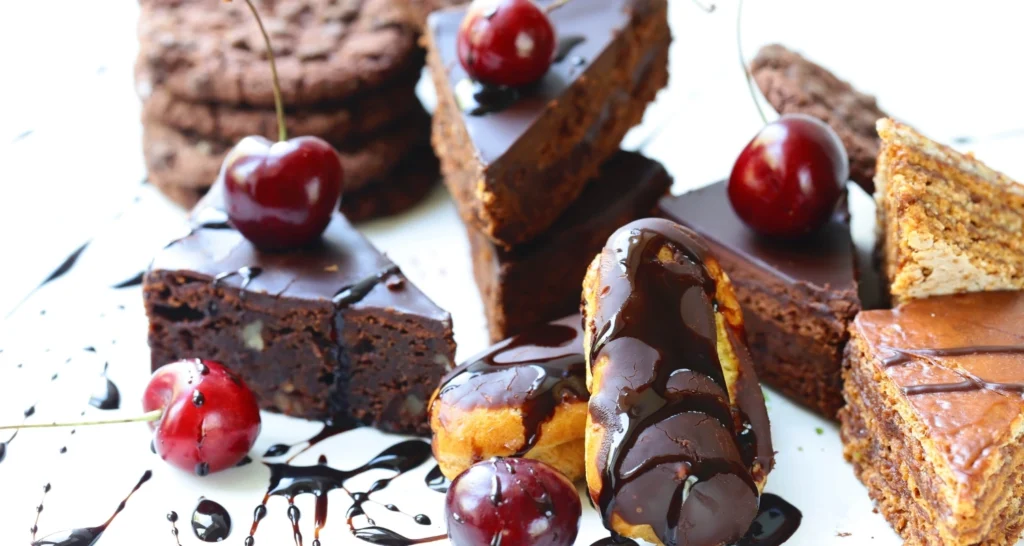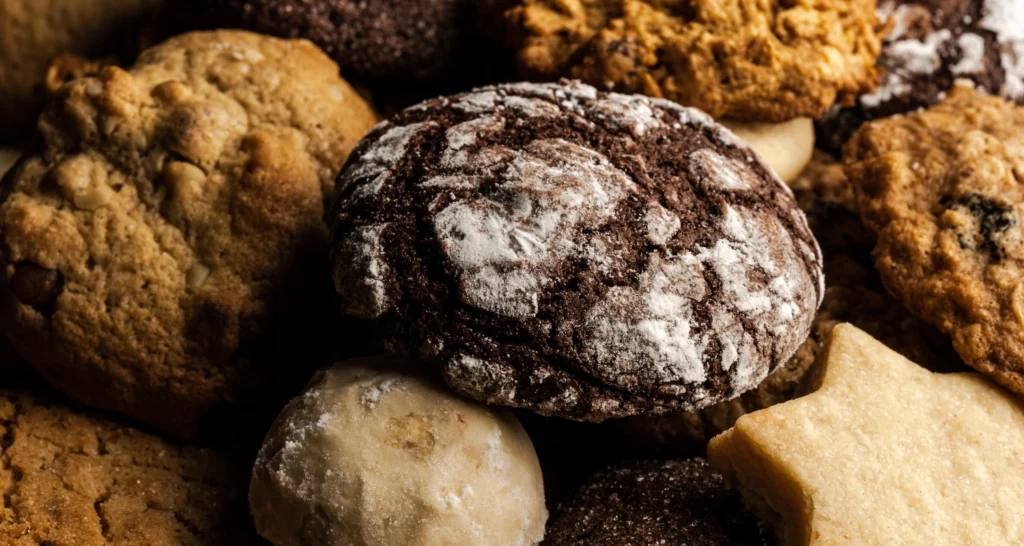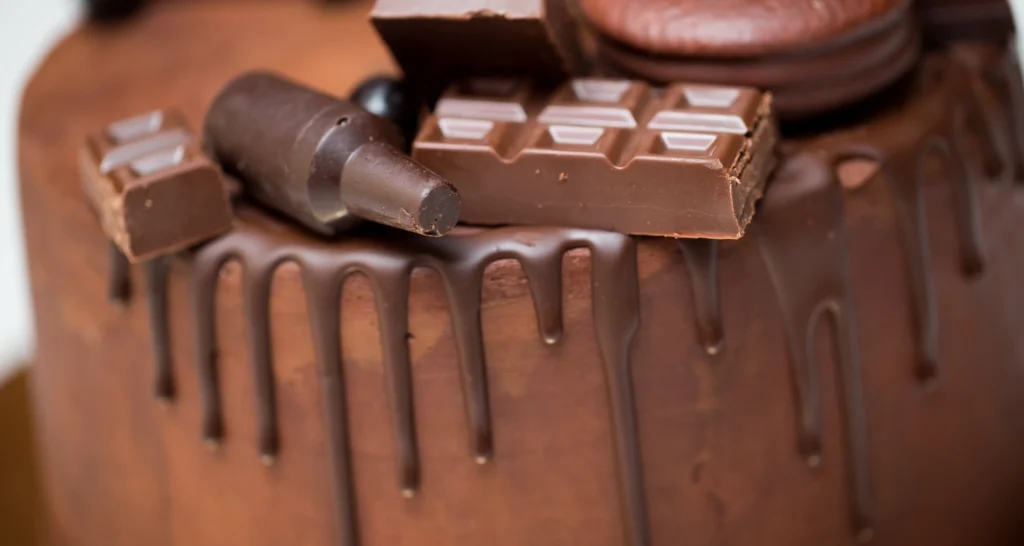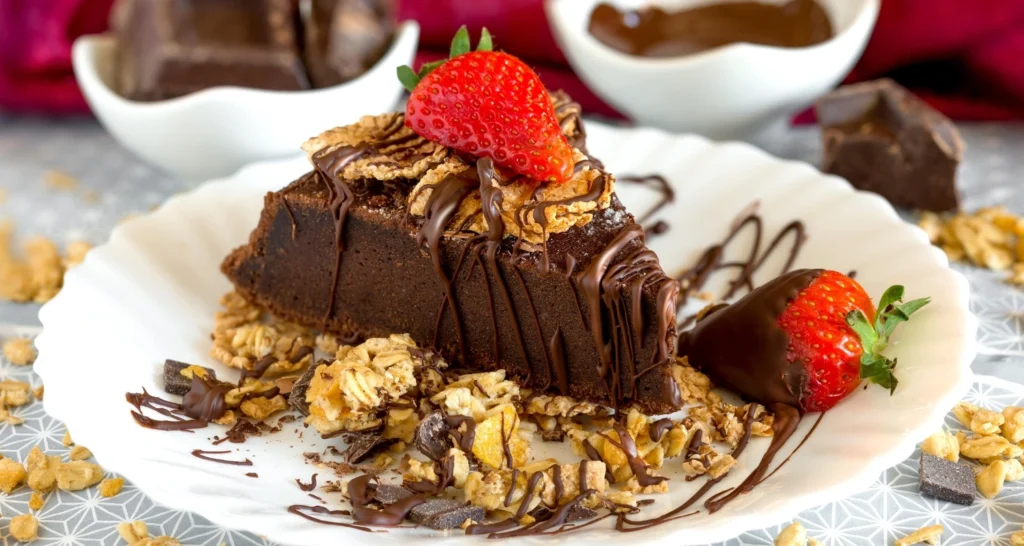The dessert table is often the heart of any celebration, but for those living a gluten-free lifestyle, it can feel like a tempting yet forbidden corner. The great news? The best gluten-free desserts today are more than just substitutes—they’re indulgent masterpieces that rival their gluten-filled counterparts in flavor, texture, and charm.
Whether you’re managing celiac disease, dealing with gluten sensitivity, or simply exploring a gluten-free diet, these desserts are here to delight your taste buds without compromising your health goals. Thanks to innovative baking techniques and a wealth of gluten-free ingredients, you can enjoy treats that are moist, rich, and utterly satisfying.
This guide will not only introduce you to the best gluten-free desserts for every occasion but will also uncover the secrets behind their success. Discover a spotlight on key gluten-free ingredients and learn how to substitute effectively. Explore the science behind gluten-free baking and break down common myths. Get step-by-step tutorials for crafting customizable, stunning desserts, and master tips for creating variations, using the right tools, and serving your sweet creations with flair.
With this comprehensive guide, you won’t just make gluten-free desserts—you’ll make desserts everyone will remember. Get ready to elevate your baking game!
Table of Contents
Ingredient Spotlight
When it comes to the best gluten-free desserts, quality ingredients are the foundation of success. Not all flours, sweeteners, or binders are created equal. Here’s a closer look at what you’ll need:
Core Ingredients
Gluten-Free Flour Alternatives
- Almond Flour (1 cup per recipe)
Adds a slightly nutty flavor and rich texture while boosting protein and healthy fats. Great for cakes, cookies, and crusts. - Coconut Flour (1/4 cup per recipe due to absorbency)
Ultra-light and slightly sweet, it pairs well with desserts like muffins, pancakes, and sponge cakes. - Oat Flour (1 cup per recipe)
It has a mild flavor and works well in baked products like tart crusts and brownies. Look for certified gluten-free oats to avoid cross-contamination.
Sweeteners
- Cane Sugar or Brown Sugar
Keep it classic or opt for brown sugar to enhance moisture in cookies and cakes. - Honey or Maple Syrup
For a natural option, these liquid sweeteners pair beautifully with fruit-forward desserts.
Binders
- One teaspoon of xanthan gum for every cup of flour helps to replicate the elasticity of gluten, which keeps your dough cohesive.
- Ground Flaxseeds (1 tbsp with 2 tbsp water per egg substitute)
Perfect for vegan or dairy-free baking.
Substitutions and Enhancements
Can’t find almond flour? Opt for hazelnut flour, which adds a deeper, more robust flavor. If coconut flour isn’t available, replace it with tapioca starch for a similar airiness.
Specialty Ingredients for the Best Gluten-Free Desserts
- Chickpea Flour
Great for savory desserts or when you want extra protein. - Date Sugar or Coconut Sugar
Low-glycemic and rich in flavor, these sweeteners bring a caramel-like taste to your treats.
Seasonal Ingredients
Fruits like fresh berries, peaches, and apples are must-haves for gluten-free pies and tarts. Visit your local farmer’s market to snag the ripest, most flavorful produce, especially in late summer and early fall.
The Science Behind Gluten-Free Baking
Baking without gluten is an exciting mix of art and science. Once you understand why certain techniques work, you’ll be empowered to create desserts as satisfying as traditional recipes.
How It Works
“Gluten acts as a binder in traditional baking, providing elasticity and structure. Without it, your dough and batters can become crumbly or dense. That’s why the best gluten-free desserts rely on alternative flours and additional ingredients like xanthan gum or eggs to replicate that structure. Mixing the correct ratio of flours—such as combining almond flour for density with coconut flour for fluffiness—is key to achieving the right balance.”
Best Gluten-Free Desserts: Culinary Benefits

By skipping gluten-based flours, you open up a world of flavor. For example, almond or hazelnut flour adds complex, nutty notes that no white flour can replicate. Gluten-free flour blends also tend to absorb flavors more intensely, meaning your desserts will taste richer with every bite.
Common Myths Debunked
“Ever heard that best gluten-free desserts are always dry? This isn’t true when you incorporate moisture-rich binders and fats (like butter, coconut oil, or flaxseeds) into your recipes. Another misconception? Substituting a gluten-free flour 1:1 for all-purpose flour will work flawlessly. Not quite—most recipes need slight tweaks to balance texture and structure.”
Step-by-Step Process
Let’s put theory into practice! Below is a foolproof process to bake a gluten-free chocolate cake that’s moist, decadent, and bound to impress.
Preparation
Prep Time: 15 minutes
Total Time: 45 minutes
You’ll Need:
- 8-inch round cake pan
- Mixing bowls
- Hand or stand mixer
- Wooden spoon or spatula
To begin, preheat your oven to 175°C (350°F). Grease your cake pan with butter or line it with parchment paper. This prevents sticking and ensures clean slices.
Step 2: Carefully measure each component. Gluten-free flours tend to be more temperamental than wheat flour, so accuracy is crucial.
Best Gluten-Free Desserts: Cooking Instructions

- Mix Dry Ingredients:
Combine 1 cup almond flour, 1/2 cup coconut flour, and 1 tsp xanthan gum in a bowl. Sift to remove any lumps. - Prepare Wet Ingredients:
Cream together 3/4 cup sugar and 1/2 cup softened butter until fluffy. Add 2 large eggs (or flax eggs) one at a time, beating after each addition. - Combine:
Slowly alternate adding the dry mixture and 1 cup milk (or plant-based milk) into the wet ingredients. Stir gently until smooth. - Bake:
Pour the batter into your prepared pan and bake for 25-30 minutes. Check doneness by inserting a toothpick in the center—if it comes out clean, your cake is ready. - Cool:
Allow the cake to cool completely before icing it with your favorite frosting (try a cream cheese-based option for extra indulgence).
Timing and Temperature
Best gluten-free desserts: Precise temperatures ensure even baking. Always preheat your oven fully and avoid opening the door while the dessert bakes—it makes all the difference for gluten-free recipes, which can be sensitive to temperature fluctuations.
Common Mistakes (and Fixes)
- Dry Texture: To add more moisture to your batter, mix in a dollop of yogurt or a splash of milk.
- Cracked Tops: For the best gluten-free desserts, cover the dessert loosely with foil halfway through baking to help it rise evenly.
- Dense Cake: Be cautious not to overmix. Stir wet and dry ingredients just enough to combine.
Variations and Customizations
Its versatility is what makes gluten-free baking so appealing. Here’s how you can adjust recipes to suit your preferences:
Flavor Variations
- Stir in espresso powder or chopped dark chocolate for a mocha spin on your cake.
- Mix cinnamon or nutmeg into crusts to match seasonal holidays.
Regional Twists

- For an Italian touch, replace almond flour with polenta for a grainier, rustic texture in your best gluten-free desserts.
- In tropical cuisines, coconut flour paired with pineapple or mango works beautifully.
The options are endless. With these tips, you’re well on your way to creating a masterpiece that’s uniquely yours.
Stay tuned for the next sections, where we’ll explore tools, storage tips, serving ideas, and troubleshooting to ensure every dessert you make truly shines!
Tools and Equipment
When it comes to crafting the best gluten-free desserts, having the right tools can make all the difference. Here are the essentials to elevate your baking game:
Essential Tools
- Stand Mixer or Hand Mixer
Save time and energy when blending tough doughs or fluffy batters. - Silicone Baking Mats or Parchment Paper
These keep things from sticking without using too much butter or oil. - Baking Scale
Precision is key in gluten-free baking. A scale ensures your measurements are spot on, especially for flours and binders. - Measuring Cups and Spoons
Opt for stainless steel for durability and accuracy. - Springform Pans or Tart Pans
Great for pies, tarts, and cheesecakes. A removable bottom makes the delicate structure of gluten-free bakes easier to handle.
Budget vs. Premium
If you’re just starting, budget tools like hand mixers or stainless-steel measuring utensils will serve you well. For seasoned bakers, investing in high-quality stand mixers (like KitchenAid), non-stick baking mats, or professional-grade tart pans can pay off in performance and longevity for the best gluten-free desserts.
Best gluten-free desserts: Maintenance Tips
- Always hand-wash silicone mats to preserve their non-stick quality.
- Clean mixer attachments immediately after use to prevent batter hardening.
- Use a gentle scrubber to avoid scratching non-stick pans, ensuring they last for years.
With these tools in hand, you’ll feel equipped to tackle even the most delicate gluten-free recipes.
Storing and Meal Prep for the Best Gluten-Free Desserts
Keeping gluten-free desserts fresh can be tricky, but with the right prep and storage methods, you’ll extend their shelf life and flavor.
Make-Ahead Tips
- Baking in Batches: Double your recipe and freeze one batch for later. Most gluten-free batters or doughs freeze well if tightly sealed.
- Prepare Dry Mixes: Mix your dry ingredients and flour blends for the best gluten-free desserts and store them in airtight containers. When you’re ready to bake, simply add the wet ingredients.
- Frosting Prep: Make your frosting ahead of time, store it in an airtight container in the fridge, and bring it to room temperature. Beat lightly before use.
Storage Instructions
- Refrigerating:
- Cakes and cookies stay moist in airtight containers in the fridge for up to 5 days.
- Avoid leaving desserts uncovered as gluten-free bakes dry out faster.
- Freezing:
- Wrap cakes, cookies, or pies tightly in plastic wrap, then place them in freezer-safe bags. They can last up to three months.
- Always thaw at room temperature to maintain texture.
- Reheating:
- Warm cookies in the microwave for 10-15 seconds for a fresh-from-the-oven feel.
- Heat cakes or pies in the oven at a low temperature (250°F) to refresh their moisture.
Shelf Life
Most gluten-free desserts are best enjoyed within 2-3 days if stored at room temperature. Freezing extends this for up to a few months, so bake ahead without worry!
Serving Suggestions
Best gluten-free desserts: Presentation and food pairings can take an already great dessert to impressive new heights. Here’s how to serve your gluten-free creations in style.
Pairings
- For Cakes: Pair with fresh berries, whipped cream, or a drizzle of salted caramel sauce.
- For cookies, dip them in hot chocolate or a chilled glass of almond milk.
- Serve warm pies with a dollop of dairy-free vanilla ice cream on the side.
Presentation Tips

- Dust cakes or cookies with powdered sugar or cocoa powder for a professional touch.
- Arrange the best gluten-free desserts on rustic wooden boards or tiered platters for a Pinterest-worthy look.
- Garnish with edible flowers, shaved chocolate, or a few sprigs of mint for elegance.
Seasonal Serving Ideas
- Summer BBQs: Serve lemon bars with a chilled iced tea.
- Holiday Parties: Indulge with gluten-free gingerbread cookies alongside mulled wine.
- Weeknight Dinners: A slice of flourless chocolate cake with a warm espresso never fails to impress.
Good food presented beautifully is half the joy—so have fun with your plating!
Troubleshooting and Error Fixes
Even with the best gluten-free dessert intentions, mistakes happen. Here’s how to troubleshoot the most common issues in gluten-free baking.
Common Problems (and Fixes)
- Desserts Crumble Too Easily:
- Fix it by adding more binder (xanthan gum or eggs) to your dough or batter.
- Dry Texture:
- Add a bit more moisture, whether it’s yogurt, a splash of milk, or an extra egg.
- Flat Results:
- Use fresh baking powder/soda, and blend batter gently to maintain air pockets.
Quick Fixes
- Overbaked Cake? Brush it with simple syrup to reintroduce moisture.
- Runny Frosting? Chill it for 15-20 minutes and beat again for thicker results.
FAQ for Common Concerns
- “Why did my cake sink in the middle?”
Your oven temperature might’ve been too low, or you overmixed the batter. - “Can I brine too long, or is there such a gluten-free equivalent?”
Over-soaking can cause dense bakes. Stick to ingredient measurements for precision.
Tackle these hiccups, and your desserts will still shine.
Nutritional and Health Insights for Best Gluten-Free Desserts
Gluten-free baking isn’t just about safety—it can also offer health benefits depending on your choices.
Calories and Macros
Here’s the nutritional breakdown for a standard slice of gluten-free chocolate cake (1/8 of the cake):
- Calories: ~250
- Protein: 7g (thanks to almond flour)
- Carbs: 20g
- Fat: 14g
Using healthier alternatives like coconut sugar or honey can reduce glycemic impacts while keeping the dessert sweet.
Health Benefits
- Almond flour: Rich in vitamin E, protein, and fiber.
- Coconut Flour: Low in carbs and high in healthy fats.
- Dark Chocolate: Rich in antioxidants, making indulgence guilt-free.
Allergy Notes
- Nut allergies? Oat flour can be used in place of almond flour. Use certified gluten-free oats to avoid cross-contamination.
- Egg allergies? Use a flax or chia egg replacement for structure.
Gluten-free desserts can be both indulgent and nourishing with the right ingredients!
Culinary Fun Facts and History
Gluten-free baking might seem like a modern trend, but its roots go way back.
Origins
- Cultures like Ancient Greece and India used alternative flours like chickpea and rice flour long before wheat became widespread.
Trivia
- Did you know almond flour desserts were a favorite among French royalty in the 1600s? Think macarons!
- Gluten-free food sales grew globally by 14% each year from 2013 to 2020 as awareness increased.
Cultural Significance
Best Gluten-Free Desserts like pies and cakes have become staples at festivals and markets worldwide, making indulgence more inclusive.
Holiday and Occasion Ideas
Celebrate the seasons with these gluten-free dessert twists.
Seasonal Use
- Spring brunch? Opt for strawberry shortcakes on gluten-free biscuits.
- Fall feasts? Pumpkin pie with oat crust is a must.
Special Occasions
- Birthdays beg for glittery, multi-colored cupcakes.
- Weddings deserve layered gluten-free chocolate cakes or petite tarts served individually.
Festive Variations
Add red and green sprinkles to cookies for Christmas or shape them like pumpkins for Halloween parties.
Success Stories and Reader Engagement
Your gluten-free dessert adventure doesn’t have to end in your kitchen. Share your triumphs and connect with others who love these recipes.
- Social Media Fun: Use hashtags like #GlutenFreeGoodies to show off your bakes.
- Interactive Features: Vote on your favorite variation or submit a new one to be featured in future recipes.
Engage with a global community of dessert lovers!
Printable Content
Here’s everything you need to simplify the process:
- Printable Recipe Card: Summarize steps into a compact, easy-to-follow format.
- Grocery List: Organize by pantry, fridge, and fresh sections for seamless shopping.
- Baking Tips Chart: Include recommended time, temperature, and substitution tips for reference.
With these tools, gluten-free baking is a breeze!
Closing and Call-to-Action
There’s no limit to the joy you can create in the kitchen with the best gluten-free desserts. From stunning cakes to indulgent cookies, you’re now equipped with the tools, tips, and creativity to take your treats to the next level.
Give these recipes a try and share your experience in the comments—we’d love to hear your thoughts! Don’t forget to bookmark this guide and explore related recipes like the best gluten-free brownies or tarts to keep the inspiration flowing.
Your next delicious moment is just a bakeaway. Time to preheat that oven!

